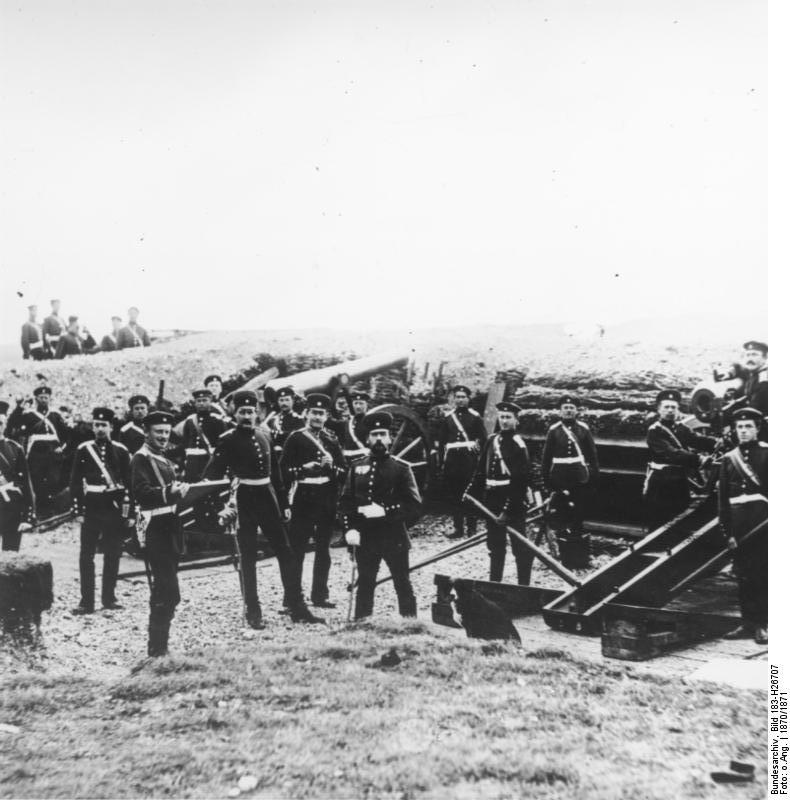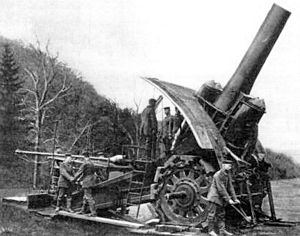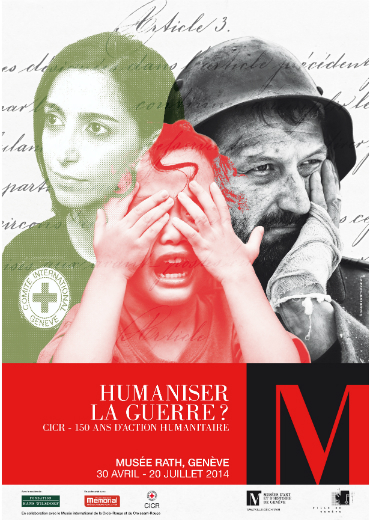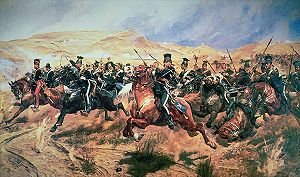| Humaniser la guerre?
Philanthropy, the Red Cross and the "Humanizing" of Wars When will we ever learn – that you can't "humanize" war, that war as such is anti-human and a crime, that war-planning generals, politicians who consider war as an option, women and men ready to fight wars are criminals? The 20th century has brought about not only mechanized,
but industrialized war. It was a further step "ahead" in a fatal direction
embarked on since early modern times. And it made it more obvious than
ever that it is no longer the sabre, the knife and the sword, no longer
the bow and arrow – weapons that depended on the force of muscles
– which inflict wounds. Gun powder as well as rifles and small cannons,
thus weapons that were already 500 years old by 1900, had been "improved"
steadily since the 1840s. During the siege of Paris that lasted from Sept.19,
1870 until Jan.28, 1871, enormously long cannons, made by the German
steel baron, Krupp, fired into the city.
Such obscene products of industrial progress – "improvements" that would be euphemistically described as a result of "modernization" today – were "topped" in the second half of the 20th century when automatic weapons became the standard of the day. The 1940s added the atom bomb, later there was the hydrogen bomb, too; missiles serve now as carriers of these weapons, and the "ingenuity" of engineers, chemist, biologist, and other scientist bent on inventing new arms has added "substitutes" and "replacements" of nuclear weapons such as new aerosol bombs, more effective "weapons grade" anthrax, the neutron bomb, sound weapons, and, if we may go by hear-say, laser weapons. If as much energy had been spent on improving the situation of mankind, a lot of the real and perceived reasons for conflict and antagonism among members of the human species might have faded away. The "levée en masse," in other words, vast armies of drafted citizens that became typical in the wake of the French Revolution and during the Napoleonic Wars (and that replaced the much smaller armies of mercenaries, "pressed" soldiers, and conscripts of an earlier era) drove up the figures of wounded and killed combattants since about the year 1800. The situation got even worse with the first "industrialized" wars that surfaced with the American civil war (1861-65) and the Franco-Prussian War (1870-71).(1) Shortly before the outbreak of the US civil war, two wars shocked public opinion, the war waged by France, Britain, and Turkey against Russia that culminated in the Battle of Balaclava in 1854 (2) and the war that pitted French and Italian troops against the Austrians in 1859. This latter war resulted in a particularly devastating battle, the Battle of Solferino that would ultimately lead to the founding of the Red Cross.(3) The suffering that such battles caused among soldiers led to agitation and activities that sought to limit the effects of slaughter and impose rules on it. It was a fight not against the crime of war as such, but a reformist undertaking, for it was always intended as a mere palliative. Since Balaclava and Solferino, wars have in no way been "humanized" – the opposite is correct: wars have turned from bad to worse, and the suffering caused in the last two great world wars as well as the wars in Indochina, Yugoslavia, Iraq and Afghanistan have brought death, maiming, and destruction to soldiers and civilians in a way and to an extent that is difficult to imagine for those not affected, and that the rest of humanity has often chosen to ignore. It should make us wonder what future wars might bring
upon us, in terms of suffering – and how we can avert that, and put
an end to war, as an "acceptable way" of resolving antagonism between countries
and of dealing with their underlying politico-economic and power conflicts.
-Jake Edmonds
Go back to Art
in Society #14, Contents
* |
|



